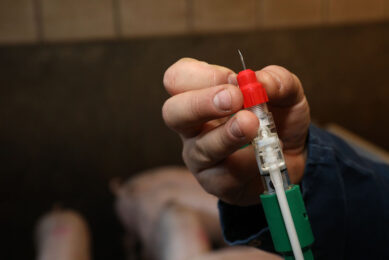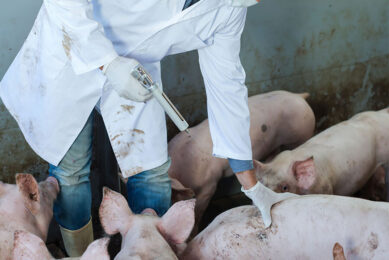Blue-ear disease in China now ‘serious’
Blue-ear disease has swept through 25 of China’s 33 provinces and regions, causing thousands of dead pigs and driving up pork prices.
Chinese officials have put the number of dead pigs from blue-ear disease at 156,000 in the past three months, but unconfirmed reports said millions of pigs have died.
The UN’s Food and Agriculture Organization (FAO) called the outbreak “serious” and is monitoring its development.
“No one knows exactly how many pigs are sick,” Guo Fusheng, an FAO scientist, said. “This disease is really complicated. Most cases have a second infection with another disease.”
The quickly spreading disease has also hit Vietnam, affecting seven of the country’s 64 provinces.
Blue-ear disease, also known as porcine reproductive and respiratory syndrome (PRRS), is usually not deadly to pigs, but Guo said the reason for the large number of deaths and the virus’ speedy spread is its changing nature. The virus infecting pigs now is different from the virus first isolated in the 1990s, he said.
Market effect
China’s government has carried out culls to try to control the disease, but they – along with low pork prices in the past few years – have contributed to pig farmers leaving the business. The result has been less pork produced and rising prices for consumers.
The government has reacted with programmes aimed at raising pork production, including free immunizations, subsidies for farmers hit by culls and contributing to sow insurance.
Vietnam also suffers
In Vietnam, blue-ear disease has been reported mostly in the centre of the country but also in the Mekong Delta, said Hoang Van Nam, deputy head of the Animal Health Department.
In all, an estimated 40,000 pigs have been infected with the disease out of 27 million pigs in Vietnam, Nam said.
Not enough pigs have died to cause a shortage of pork, but the price of pork actually dropped because some local residents were wary of eating potentially diseased meat although government officials announced that the disease poses no threat in cooked meat.
No new cases
The disease appears to have stopped spreading in Vietnam with two of the affected provinces reporting no new cases for more than two weeks, said Tran Trong Them, deputy director of the Vietnam Animal Husbandry Institute.
“It happened in a small number of localities and the disease is under control now,” Them said.
Join 18,000+ subscribers
Subscribe to our newsletter to stay updated about all the need-to-know content in the pigsector, three times a week. Beheer
Beheer










 WP Admin
WP Admin  Bewerk bericht
Bewerk bericht